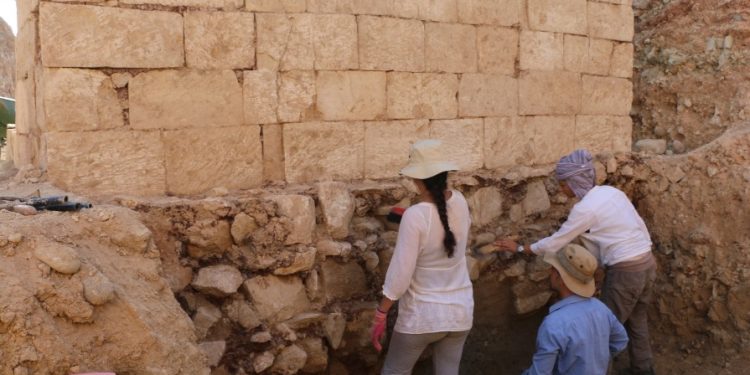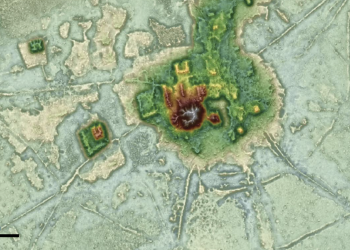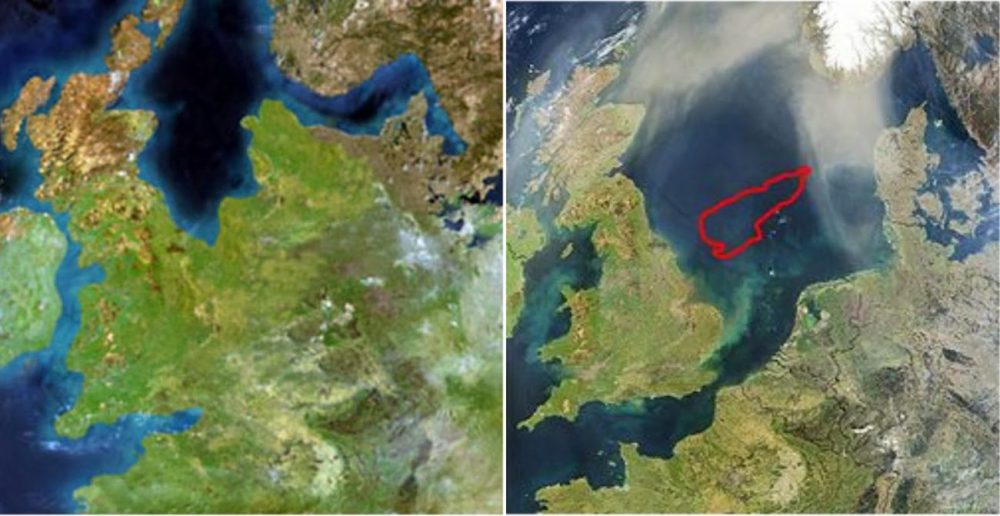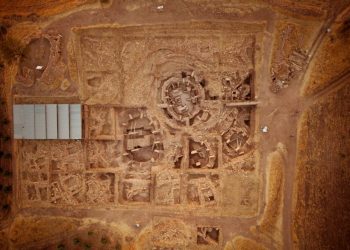Excavations of a burial mound of 100 meters by 60 meters in Cyprus found what seemed to be a defensive wall of a fortress built when the successors of Alexander the Great were fighting for control of Cyprus in the 3rd century BC. An official statement from the Cyprus Department of Antiquities states that the newly discovered wall dates back to the 5th century BC. For almost ten years, excavations have been taking place at the Laona Tumulus, an archaeological site located less than 2 kilometers east of the sanctuary of Aphrodite. The northeast corner of the ancient fortress survives to a height of six meters, and this makes it one of the most significant monuments of the ‘Cypriot Kingdoms Era,'” the statement reads.
It is possible that the mound was built during the third century BC, based on the ceramic evidence. It has been primarily the SE quarter that has been excavated since 2013. The UC team discovered a small square monument (four by four meters) at a depth of over six meters about 12 meters south of the summit, which rises to 114 meters above sea level. When the mound was built, the east wall of the building stood 3,5 meters high, even though it was already half destroyed. Red clay and unworked stones make up the foundation ledge. In spite of this, there is no relationship between the monument’s external and internal building plans; only the external walls of worked blocks would have been visible above ground.
As a result of the investigation, it has been established that this particular monument was not designed to be used internally. There were no objects or burial chambers in it. Worked marl made up the solid homogeneous filling between the stone walls. This long channel must have been cut to the east for the preparation of the marl, and it must have communicated with the center of the foundation ledge.
Artifacts found buried were dated using a variety of techniques by archaeologists. As a result of relative dating, we can estimate how old an object is based on its surroundings: stratigraphy assumes that sites are layered in order of time period, with older layers below the newer ones. In contrast, seriation estimates the age of a site by statistically analyzing groups of artifacts from the same site.
To estimate age more accurately, archaeologists use absolute dating techniques in addition to relative dating. Using radiocarbon dating, organic matter can only be dated by measuring carbon-14 levels in samples and comparing them to international standards. Differences between carbon isotopes indicate how much the isotope has decomposed and, therefore, how old it is. As well as dendrochronology, which dates wooden objects through tree rings, thermoluminescence dates rocks and crystals, and obsidian hydration dates volcanic stone tools through obsidian hydration.
Join the discussion and participate in awesome giveaways in our mobile Telegram group. Join Curiosmos on Telegram Today. t.me/Curiosmos











